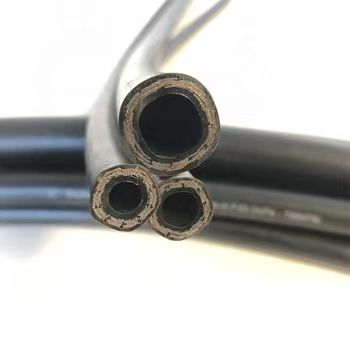335345435
Aug . 18, 2024 09:53 Back to list
Types and Uses of Hydraulic Fittings in Fluid Power Systems
Understanding Hydraulic Fitting Types
Hydraulic systems are pivotal in a wide range of industries, including construction, manufacturing, and automotive, providing powerful and efficient fluid power solutions. Central to these systems are hydraulic fittings, which play a crucial role in connecting various components, ensuring the efficient transfer of hydraulic fluids. Understanding the different types of hydraulic fittings is essential for anyone involved in the design, maintenance, or operation of hydraulic systems.
1. Types of Hydraulic Fittings
Hydraulic fittings come in numerous shapes and sizes, designed to accommodate the specific needs of different applications. The most common types include
- Elbow Fittings These are used to change the direction of fluid flow within a hydraulic system. They typically come in 90-degree or 45-degree angles, facilitating easier routing of hoses and tubes around obstacles.
- Straight Fittings Straight fittings connect two pieces of hydraulic components or hoses in a linear fashion. These are among the simplest fittings and are essential for creating a direct connection between components without any directional change.
- Tee Fittings Designed to distribute fluid into multiple hoses or pipes from a single line, tee fittings are shaped like the letter 'T'. They allow for branching off a flow from a straight line, making them versatile in various configurations.
- Cross Fittings These fittings allow for the connection of four different hydraulic lines at a single point. This type is particularly useful when multiple branches need to converge, enhancing the versatility of system configurations.
- Couplers These fittings facilitate the connection and disconnection of hoses without the need for tools. Quick couplers are commonly used in applications requiring frequent changes to hydraulic systems, allowing for flexibility and efficiency.
2. Construction and Materials
Hydraulic fittings are typically constructed from materials that can withstand high pressure and resist corrosion. Commonly used materials include steel, stainless steel, brass, and aluminum. The choice of material often depends on the specific conditions of the hydraulic system, such as the type of fluid used, the operating pressure, and environmental factors.
- Steel Known for its strength and durability, steel fittings are often used in high-pressure applications. However, they may be prone to corrosion if not treated or coated adequately.
hydraulic fitting types

- Stainless Steel Offering excellent corrosion resistance, stainless steel fittings are ideal for systems that handle corrosive fluids or operate in harsh environments
.- Brass Lightweight and resistant to corrosion, brass fittings are frequently used in lower-pressure applications and are often favored for their ease of machining.
- Aluminum Lightweight and cost-effective, aluminum fittings are used in some hydraulic applications, particularly where weight is a significant factor, such as in mobile equipment.
3. Selection Criteria
When selecting hydraulic fittings, several factors must be taken into account to ensure optimal performance and safety
- Compatibility Ensure that the fitting is compatible with the materials of the hoses or tubes it connects. Mismatched materials can lead to leaks and system failure.
- Pressure Ratings Always check the pressure ratings of the fittings to ensure they can withstand the operational pressures of the system.
- Temperature Consider the operating temperature range of the system to select fittings that will not warp or degrade over time.
- Ease of Installation Some fittings are designed for easy installation, while others may require specialized tools or skills. This can impact maintenance and repair efficiency.
Conclusion
Hydraulic fittings are fundamental components of hydraulic systems, enabling the safe and efficient transfer of fluid. Understanding the different types and materials available, as well as the criteria for selection, is vital for anyone working in industries that rely on hydraulic technology. By choosing the appropriate fittings for specific applications, operators can ensure optimal performance, minimize downtime, and enhance the overall safety of hydraulic systems.
-
SAE 100 R17 Black Smooth Cover Hydraulic Hose
NewsMar.07,2025
-
SAE 100 R17 Black Smooth Cover Hydraulic Hose
NewsMar.07,2025
-
SAE 100 R17 Black Smooth Cover Hydraulic Hose
NewsMar.07,2025
-
SAE 100 R17 Black Smooth Cover Hydraulic Hose
NewsMar.07,2025
-
SAE 100 R17 Black Smooth Cover Hydraulic Hose
NewsMar.07,2025
-
steel wire braided hydraulic hose
NewsMar.07,2025



